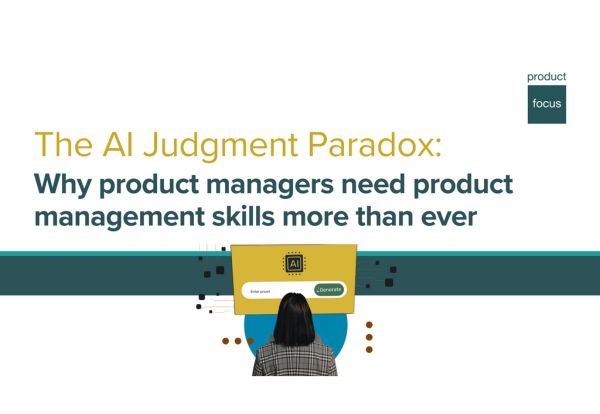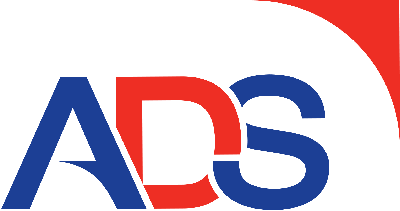The AI Judgment Paradox: Why product managers need product management skills more than ever
The messy reality between hype and fear: We’re not heading toward AI replacing competent PMs working on complex products. We’re heading toward competent PMs who understand AI becoming incredibly valuable.
Picture this. You’re launching a new industrial IoT sensor platform that involves hardware, cloud services, field service support, and regulatory compliance across multiple countries. You ask ChatGPT (or similar) to create a go-to-market strategy. Minutes later, you have a beautifully formatted document with market analysis, pricing recommendations, and rollout timelines. It looks incredibly professional. The logic flows perfectly.
But the recommendations? They could be dangerously wrong.
Welcome to the AI Judgment Paradox, the catch-22 that every product manager needs to understand. You need deep PM expertise to effectively use AI tools and verify output, but AI is supposedly going to replace that very expertise. It’s like being told you need to be a master chef to operate a cooking robot that’s designed to replace master chefs.

The universal problem we all recognize
This paradox isn’t unique to product management. Consider getting legal advice from AI. It seems perfectly reasonable until you need to make an impactful decision based on it. Then you realize you’re not legally trained, so you have no idea if following that advice will help or harm you. Same with medical or financial information from AI. It sounds credible and authoritative, but you pause before acting on it because you lack the expertise to evaluate whether it’s accurate or dangerous.
But there’s an even more fundamental issue. You’re paid to take responsibility for these decisions. When your AI-generated go-to-market strategy fails, you don’t get to tell your CEO ‘the AI made me do it.’ Your name is on the recommendation. Your reputation is at stake. You need to understand and defend every strategic choice, just like you would with output from any direct report.
The uncomfortable truth? You can’t verify what you don’t understand. Without product management skills and domain expertise, AI becomes a sophisticated probabilistic word generator that produces convincing-looking output you can’t verify.
The verification burden
Here’s where things get counterintuitive. Imagine you ask AI to size the market for your new industrial automation platform. You feed it industry reports, competitor data, and regulatory documents. Minutes later, you get a beautifully structured market analysis: something like TAM of $47 billion, SAM of $8.2 billion, SOM of $340 million over three years. The methodology looks sound. It looks seductively impressive.
But then you pause. You realize you’re potentially betting the company’s future on hallucinated data.
That’s when you realize verification is everything, and that often AI shifts, not saves, time. You gain speed in content creation but lose it in verification, unless you already know what “right” looks like.
When verification costs outweigh gains
The verification burden varies dramatically depending on your AI use case and scales directly with the stakes of your decision. For our market sizing example, that verification might look like cross-checking TAM calculations with multiple industry sources, verifying addressable market assumptions against actual customer procurement cycles, confirming competitive displacement scenarios with sales team experience, and reviewing geographic expansion timelines against regulatory realities.
Low-stakes AI wins (quick verification, genuine time savings):
- Writing first drafts of user stories or requirements
- Creating meeting agendas or status updates
- Formatting technical documentation
- Generating email templates or communication outlines
High-stakes AI challenges (extensive verification, reduced efficiency):
- Strategic market analysis and recommendations
- Competitive intelligence and positioning insights
- Go-to-market strategy and launch planning
- Roadmap and feature decisions
The pattern is clear. As decision stakes increase, verification requirements grow, and AI’s efficiency advantages diminish or may even disappear.
Why verification fails without expertise
Effective verification is impossible without PM skills and deep domain knowledge, especially for high-stakes AI outputs. You can’t spot flawed market assumptions if you don’t understand your market and you can’t catch unrealistic feature recommendations if you don’t know your technical constraints. You can’t identify user behavior insights that contradict your actual customer feedback.
The higher the stakes of your decision, the more verification you need, and the less efficiency AI will provide. You might get impressive-looking strategic recommendations, but you can’t verify the methodology, data quality, or logical reasoning without the expertise to recreate the work yourself.
This means product management expertise isn’t becoming less valuable. It’s becoming more valuable. AI multiplies expertise but doesn’t manufacture it, amplifying the impact of good judgment while also amplifying the consequences of poor judgment.
The strategy is to build both muscles
The winning strategy isn’t choosing between product management skills OR AI tools. It’s mastering both to create an unbeatable combination.
Start with fundamentals
This is the hard work that can’t be shortcut. Mastering the core disciplines of product management and gaining domain expertise. You need to deeply understand your customers: their jobs-to-be-done, pain points, and decision-making processes. You need to know your industry inside and out, including the competitive landscape, market dynamics, and business models that drive success.
Develop expertise in product strategy, stakeholder management, and the technical aspects of how your products work. Build judgment through experience making tough trade-off decisions under uncertainty. Learn to read between the lines in customer feedback and stakeholder conversations.
These fundamentals become your AI superpower, enabling you to craft better prompts, spot flawed outputs, and make strategic decisions that AI can’t. Most importantly, they let you quickly assess when AI output is good enough for low-stakes decisions versus when high-stakes choices require deeper verification.
Layer in AI fluency
Learn how different AI tools work, their strengths and limitations, and how to prompt them effectively for your industry context. Practice the verification loop. Experiment with AI for research, analysis, and documentation while building workflows that combine human insight with AI efficiency.
The goal isn’t to become an AI expert. It’s to become an expert product manager who leverages AI effectively.
The augmentation advantage
The good news? While AI might not replace product managers anytime soon, it’s already proving incredibly valuable as an intelligent assistant. The key is understanding where AI excels and where human judgment remains irreplaceable.
A product manager using AI tools can certainly work faster on routine tasks and get directional guidance for complex analysis. But (and this is crucial) the AI output becomes riskier to act on as stakes increase. AI can provide useful directional assistance and initial ideas, helping you process information faster and spot patterns you might miss. But for high-stakes strategic decisions, you’ll still need deep expertise to verify outputs and make final calls.
AI won’t replace you yet (but it might expose you)

What excites me about this moment is that we’re not heading toward a world where AI replaces competent product managers working on complex products. We’re heading toward a world where competent product managers who understand how to work with AI become incredibly valuable.
Think about it. In five years, you’re not likely to be replaced by autonomous AI agents. That’s tech-bro utopian thinking that assumes perfect software, seamless integrations, and frictionless stakeholder alignment. Many of us work with complex products, hardware, legacy systems, imperfect data, complex regulatory requirements, and organizational politics.
Instead, you’ll be doing product management with sophisticated AI tools amplifying your capabilities: accelerating research, improving analysis, doing some of the drudgework, and helping you make better-informed decisions faster. But the stakes of your decisions will determine how much you can trust that AI assistance.
For low-stakes work, AI will genuinely save time. For high-stakes strategic decisions, you’ll still need deep expertise to verify outputs and make final calls. The PMs who thrive will understand this difference intuitively.
We’re living in the augmentation era
Every AI tool you use today comes with the same standard disclaimer: “AI can make mistakes.” Until AI companies replace that warning with “Certified correct output,” we’re living in a world where augmented product managers who know how much verification to apply will dominate.
This isn’t a temporary inconvenience. It’s the new reality of product management. The competitive advantage belongs to PMs who can navigate the verification loop effectively, leverage AI’s strengths while compensating for its weaknesses, apply human judgement where it matters most, and intuitively understand when stakes require extensive verification versus when AI output is good enough to act on.
The time to start building these complementary skills is now. While others debate whether AI will replace PMs, the smart money is on becoming a PM who can harness AI effectively. In the messy reality of actual product work, this combination will set you apart.
The product managers who thrive will be those who’ve invested in developing product skills, domain expertise, and AI fluency. They’ll be the ones who can spot when AI analysis misses critical industry nuances, who can craft prompts that generate genuinely useful insights, and who can verify outputs with confidence.






